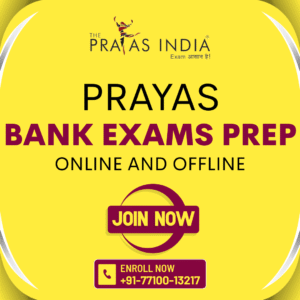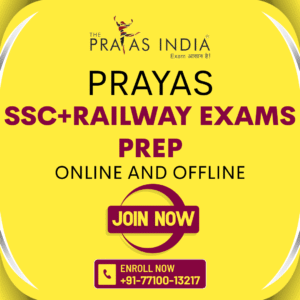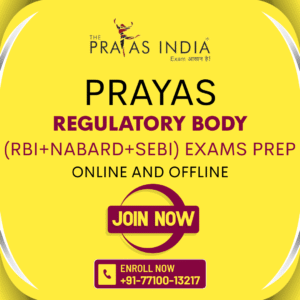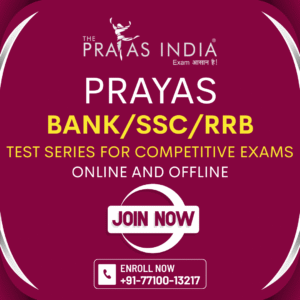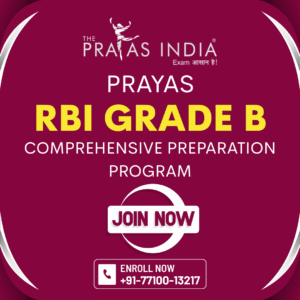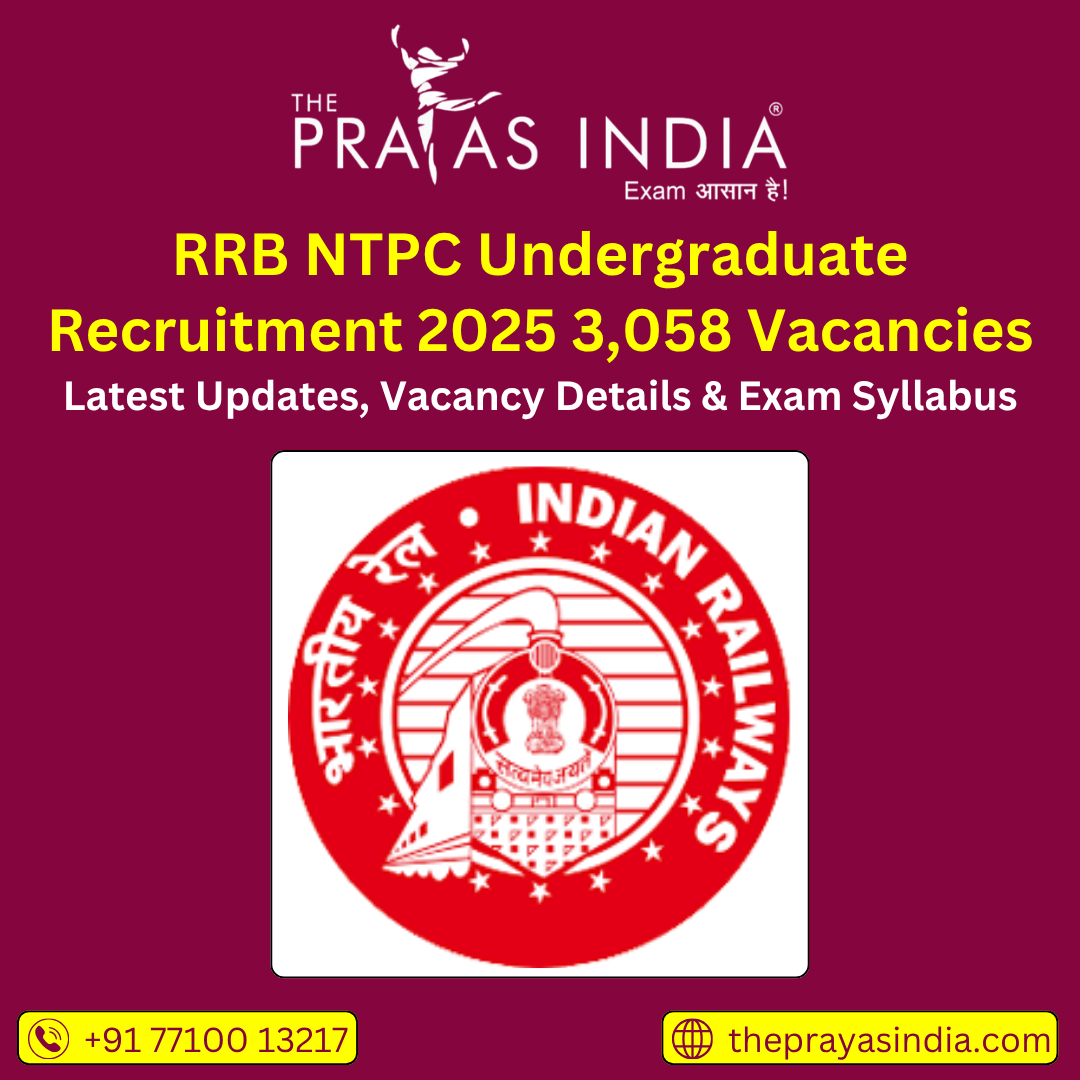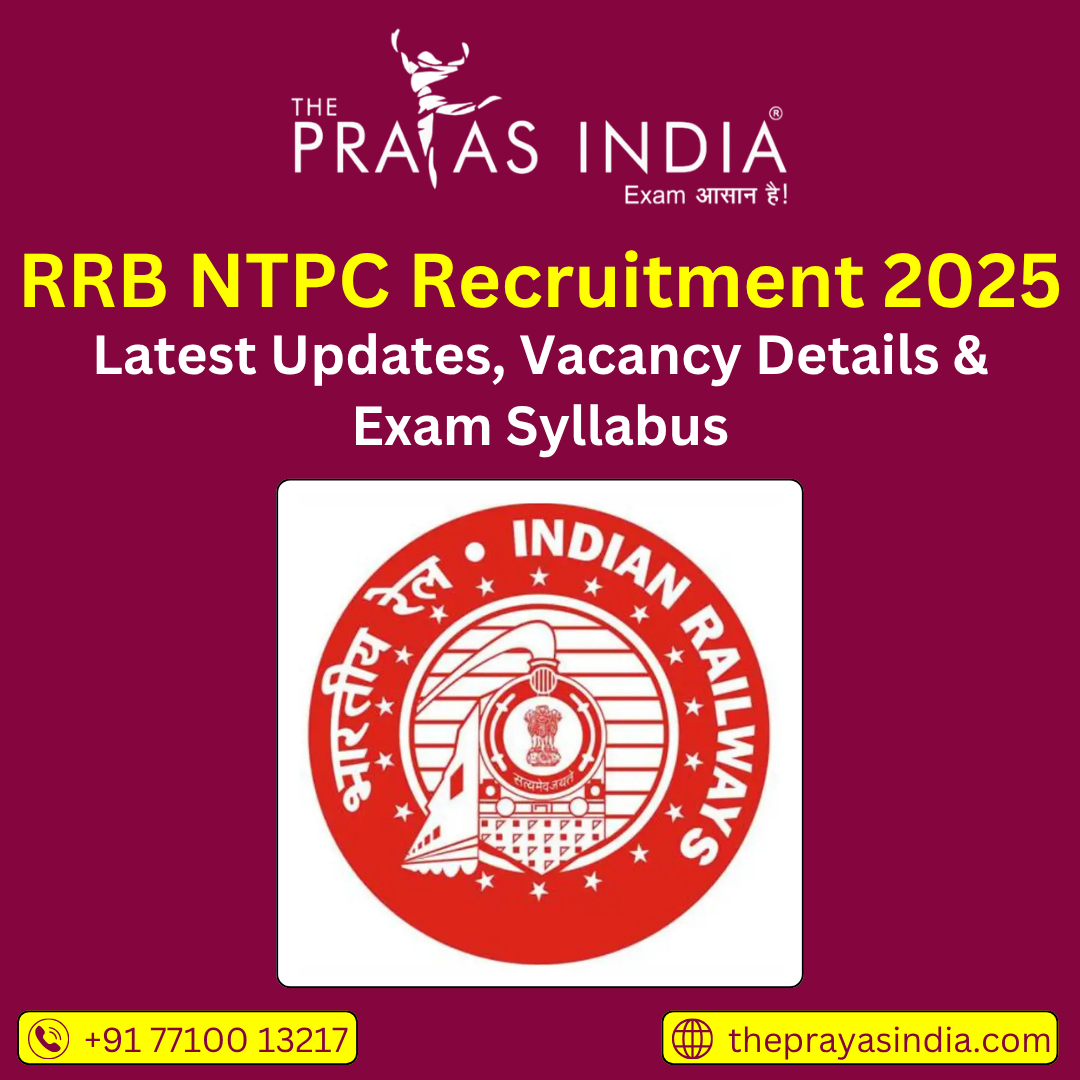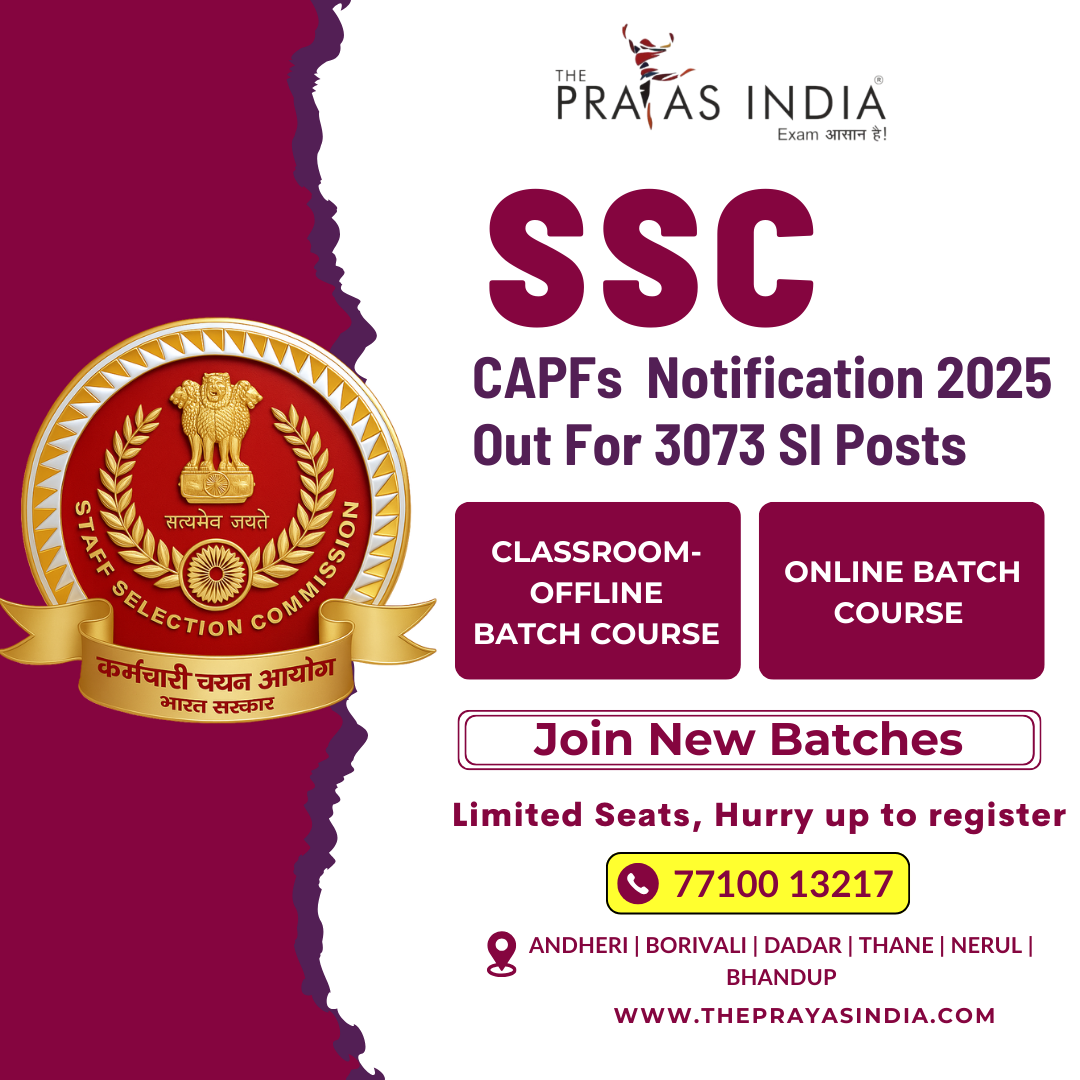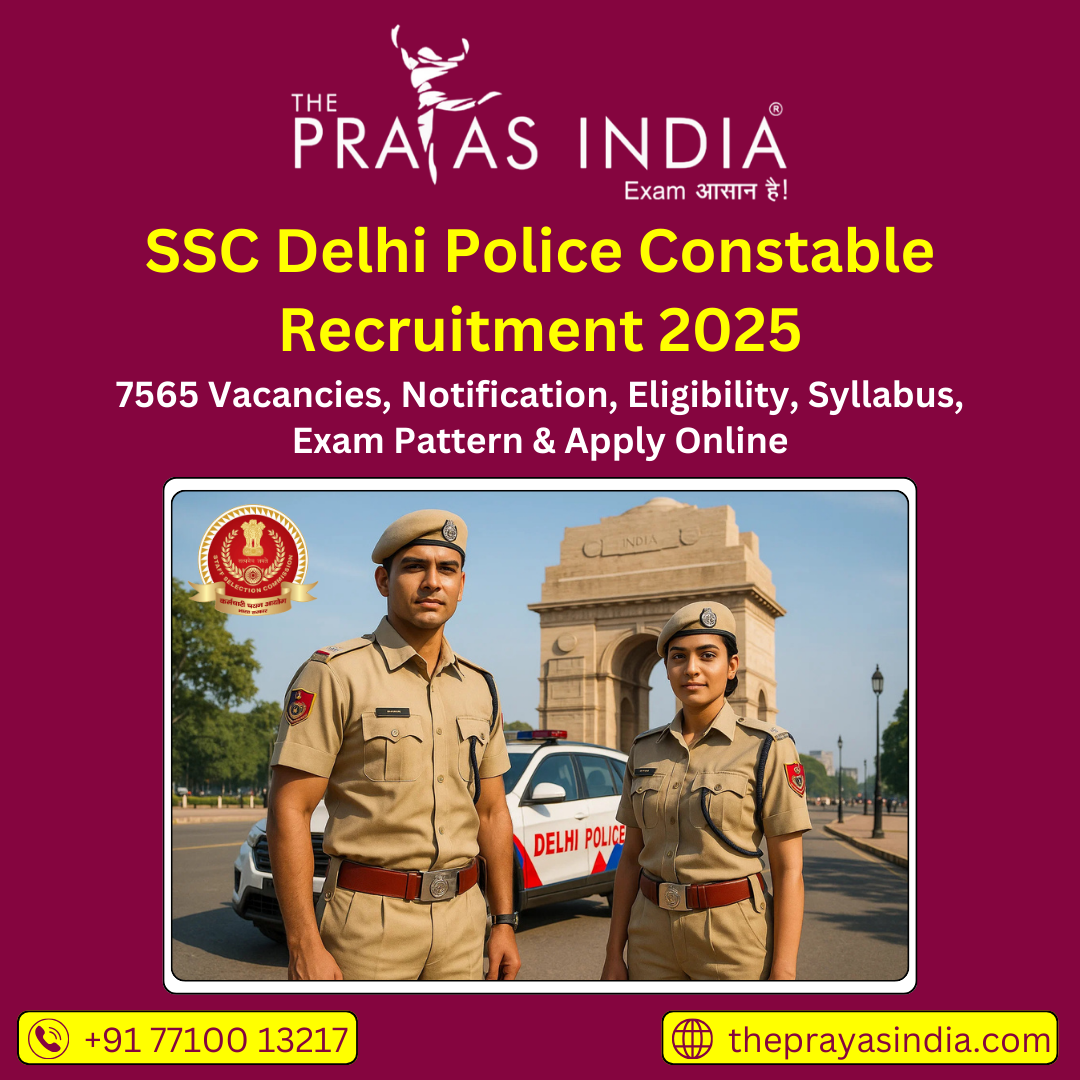What is SSC CGL?
SSC CGL stands for “Staff Selection Commission – Combined Graduate Level” examination. It is one of the most popular and prestigious exams conducted by the Staff Selection Commission (SSC) of India. The SSC CGL exam is held annually to recruit candidates for various Group B and Group C posts in ministries, departments, and organizations of the Government of India.
Details of the Posts:



Note I:
The final allotment of posts by the Commission will be based on the candidate’s merit and preferences submitted during the selection process. Once a post is allotted, no request for a change will be entertained, even if the candidate fails to meet the specific physical, medical, or educational requirements of that post.
For example, if a candidate selects a higher-preference post and qualifies based on merit but later does not fulfill the required standards (such as physical or medical criteria), their candidature for that post will be cancelled.
Note II:
Candidates must be aware that certain posts—such as Inspector (Central Excise/Examiner/Preventive Officer), Sub-Inspector in CBN (Ministry of Finance), Sub-Inspector/Junior Intelligence Officer in NCB (MHA), Sub-Inspector in CBI and NIA, and UDC/SSA in BRO—have specific physical standards, physical tests, and medical standards. (Refer to Annexure-XVI and Annexure-XVII of the official notification for details.)
Candidates should only opt for such posts if they are confident of meeting all the specified criteria. The physical and medical tests will be conducted by the respective user departments after final selection and nomination.
Note III:
As per Gazette Notification No. P-13/1/2022-DD-3 dated 16.08.2023, issued by the Department of Empowerment of Persons with Disabilities (Ministry of Social Justice and Empowerment), the Directorate of Income Tax, CBDT has been exempted from accepting candidates with benchmark disability of Mental Illness (MI) for the posts of Income Tax Inspector and Tax Assistant. Hence, candidates with this specific disability are not eligible for these posts.
Note IV:
Any ministry, department, or organization can, in consultation with the Department of Empowerment of Persons with Disabilities, issue a Gazette Notification to declare certain posts as unsuitable for specific disabilities. However, such notifications must be communicated to the SSC before the advertisement/notice is published.
If a department fails to do this in advance, it cannot later reject the dossiers of candidates with disabilities who have already been nominated for those posts after final selection.
SSC Graduate Level CGL 2024 Age Limit as on 01/08/2024
| S. No. | Age Limit | Date of Birth Range | Applicable for Posts Requiring Age Limit |
|---|---|---|---|
| (i) | 18 to 27 years | Born between 02-08-1998 and 01-08-2007 | Posts with 18–27 years age requirement |
| (ii) | 20 to 30 years | Born between 02-08-1995 and 01-08-2005 | Posts with 20–30 years age requirement |
| (iii) | 18 to 30 years | Born between 02-08-1995 and 01-08-2007 | Posts with 18–30 years age requirement |
| (iv) | 18 to 32 years | Born between 02-08-1993 and 01-08-2007 | Posts with 18–32 years age requirement |
SSC CGL (STAFF SELECTION COMMISSION COMBINED GRADUATE LEVEL)
Assistant Audit Officer/Assistant Accounts Officer:
- Essential Qualifications: Bachelor’s Degree from a recognized University or Institute.
- Desirable Qualifications: Chartered Accountant or Cost & Management Accountant or Company Secretary or Masters in Commerce or Masters in Business Studies or Masters in Business Administration (Finance) or Masters in Business Economics.
- During the period of probation direct recruits shall have to qualify the “Subordinate Audit/ Accounts Service Examination” in respective branches for confirmation and regular appointment as Assistant Audit Officer/Assistant Accounts Officer.
Junior Statistical Officer:
- Bachelor’s Degree in any subject from a recognized University or Institute with at least 60% Marks in Mathematics at 12th standard level.
Or
- Bachelor’s Degree in any subject with Statistics as one of the subjects at degree level.
All other Posts:
- Bachelor’s Degree from a recognized University or equivalent.
- The candidates who have appeared in their final year of their graduation can also apply, however they must possess Essential qualification on or before the cut-off date i.e. 01-08-2024.
SCHEME OF THE EXAMINATION:
The Computer Based Examination will be conducted in two tiers as indicated below:
- Tier-I
- Tier-II
Marks scored by candidates in Computer Based Examinations, if conducted in multiple shifts, will be normalized by using the formula published by the Commission vide Notice No: 1-1/2018-P&P-I dated 07-02-2019 and such normalized scores will be used to determine final merit and cut-off marks
SCHEME OF TIER-I EXAMINATION:

- Tier-I will consist of Objective Type, Multiple choice questions. The questions will be set both in English & Hindi except for English Comprehension.
- There will be negative marking of 0.50 for each wrong answer.
SCHEME OF TIER-II EXAMINATION:

General Structure
Tier-II consists of Paper-I and Paper-II, conducted on separate shifts/days.
Paper-I is compulsory for all candidates.
Paper-II is only for candidates who apply and qualify for:
Junior Statistical Officer (JSO)
Statistical Investigator Grade-II
Paper-I Structure (Mandatory for All)
Divided into Two Sessions on the Same Day:
Session-I: (Total Duration: 2 hours 15 minutes)
Section-I (60 minutes)
Part A: Mathematical Abilities
Part B: Reasoning & General Intelligence
Section-II (60 minutes)
Part A: English Language & Comprehension
Part B: General Awareness
Section-III (15 minutes)
Computer Knowledge Test (Qualifying in nature)
Session-II: (15 minutes)
Section-IV
Data Entry Speed Test (DEST)
2000 key depressions in 15 minutes
Mandatory for all posts (Qualifying nature)
Paper-II (Only for JSO/Statistical Investigator)
100 questions on Statistics
Duration: 2 hours
Negative Marking: 0.50 marks per wrong answer
Other Key Rules
All sections of Paper-I must be qualified separately.
Negative marking in Paper-I:
1 mark for each wrong answer in Section-I, II, and III
Questions will be in English & Hindi, except for the English Language section.
DEST & Computer Knowledge Test are qualifying but higher qualifying standards will apply for:
ASO in CSS/MEA/AFHQ
Assistant in SFIO/IMD/Ministry of Mines
Inspector & Executive Assistant (CBIC), Tax Assistant (CBDT/CBIC), etc.
SCHEME OF EXAMINATION:
Syllabus (Tier-I)
Tier-I: General Intelligence & Reasoning: It would include questions of both verbal and non-verbal types.
General Intelligence
- Analogies
- Similarities and differences
- Space visualization
- Spatial orientation
- Problem-solving
- Analysis
- Judgment
- Decision-making
- Visual memory
- Discrimination
- Observation
- Relationship concepts
- Arithmetical reasoning and figural classification
- Arithmetic number series
- Non-verbal series
- Coding and decoding
- Statement conclusion
- Syllogistic reasoning etc
Reasoning
- Semantic Analogy
- Symbolic/Number Analogy
- Figural Analogy
- Semantic Classification
- Symbolic/Number Classification
- Figural Classification
- Semantic Series
- Number Series
- Figural Series
- Problem-Solving
- Word Building
- Coding & de-coding
- Numerical Operations
- Symbolic Operations
- Trends
- Space Orientation
- Space Visualization
- Venn Diagrams
- Drawing inferences
- Punched hole/ pattern- folding & un-folding
- Figural Pattern-folding and completion
- Indexing
- Address matching
- Date & city matching
- Classification of centre codes/roll numbers
- Small & Capital letters/numbers coding
- Decoding and classification
- Embedded Figures
- Critical thinking
- Emotional Intelligence
- Social Intelligence
General Awareness: Questions in this component will be aimed at testing the candidates’ general awareness of the environment around him and its application to society. Questions will also be designed to test knowledge of current events and of such matters of every day observations and experience in their scientific aspect as may be expected of any educated person.
The test will also include questions relating to India and its neighbouring countries especially pertaining History, Culture, Geography, Economic Scene, General Policy & Scientific Research.
Quantitative Aptitude: The questions will be designed to test the ability of appropriate use of numbers and number sense of the candidate.
- Whole numbers
- Decimals
- Fractions and relationships between numbers
- Percentage
- Ratio & Proportion
- Square roots
- Averages
- Interest
- Profit and Loss
- Discount
- Partnership Business
- Mixture and Alligation
- Time and distance
- Time & Work
- Basic algebraic identities of School Algebra & Elementary surds
- Graphs of Linear Equations
- Triangle and its various kinds of centres
- Congruence and similarity of triangles
- Circle and its chords
- Tangents
- Angles subtended by chords of a circle
- Common tangents to two or more circles
- Triangle
- Quadrilaterals
- Regular Polygons
- Circle
- Right Prism
- Right Circular Cone
- Right Circular Cylinder
- Sphere
- Hemispheres
- Rectangular Parallelepiped
- Regular Right Pyramid with triangular or square base
- Trigonometric ratio
- Degree and Radian Measures
- Standard Identities
- Complementary angles
- Heights and Distances
- Histogram
- Frequency polygon
- Bar diagram & Pie chart
English Comprehension: Candidates’ ability to understand correct English, his basic comprehension and writing ability, etc. would be tested. The questions in Parts A, B, & D will be of a level commensurate with the essential qualification viz. Graduation and questions in Part-C will be of 10th standard level.
Syllabus (Tier-II):
Module-I of Session-I of Paper-I (Mathematical Abilities):
Number Systems:
- Computation of Whole Number
- Decimal and Fractions
- Relationship between numbers
Fundamental arithmetical operations:
- Percentages
- Ratio and Proportion
- Square roots
- Averages
- Interest (Simple and Compound)
- Profit and Loss
- Discount
- Partnership Business
- Mixture and Alligation
- Time and distance
- Time and work
Algebra:
Basic algebraic identities of School Algebra and Elementary surds (simple problems) and Graphs of Linear Equations.
Geometry:
Familiarity with elementary geometric figures and facts:
- Triangle and its various kinds of centres
- Congruence and similarity of triangles
- Circle and its chords
- Tangents, angles subtended by chords of a circle
- Common tangents to two or more circles
Mensuration:
- Triangle
- Quadrilaterals
- Regular Polygons
- Circle
- Right Prism
- Right Circular Cone
- Right Circular Cylinder
- Sphere
- Hemispheres
- Rectangular Parallelepiped
- Regular Right Pyramid with triangular or square Base.
Trigonometry:
- Trigonometry
- Trigonometric ratios
- Complementary angles
- Height and distances (simple problems only) Standard Identities like sin2𝜃 + cos2𝜃=1 etc.
Statistics and probability:
- Use of Tables and Graphs:
- Histogram
- Frequency polygon
- Bar-diagram
Pie-chart; Measures of central tendency:
- Mean
- Median
- Mode
- Standard deviation; calculation of simple probabilities.
Module-I of Session-I of Paper-I (Mathematical Abilities):
Number Systems:
- Computation of Whole Number
- Decimal and Fractions
- Relationship between numbers
Fundamental arithmetical operations:
- Percentages
- Ratio and Proportion
- Square roots
- Averages
- Interest (Simple and Compound)
- Profit and Loss
- Discount
- Partnership Business
- Mixture and Alligation
- Time and distance
- Time and work
Algebra:
Basic algebraic identities of School Algebra and Elementary surds (simple problems) and Graphs of Linear Equations.
Geometry:
Familiarity with elementary geometric figures and facts:
- Triangle and its various kinds of centres
- Congruence and similarity of triangles
- Circle and its chords
- Tangents, angles subtended by chords of a circle
- Common tangents to two or more circles
Mensuration:
- Triangle
- Quadrilaterals
- Regular Polygons
- Circle
- Right Prism
- Right Circular Cone
- Right Circular Cylinder
- Sphere
Module-II of Section-I of Paper-I (Reasoning and General Intelligence):
Questions of both verbal and non-verbal types. These will include questions on
- Semantic Analogy
- Symbolic operations
- Symbolic/ Number Analogy
- Trends
- Figural Analogy
- Space Orientation
- Semantic Classification
- Venn Diagrams
- Symbolic/ Number Classification
- Drawing inferences
- Figural Classification
- Punched hole/ pattern-folding & unfolding
- Semantic Series
- Figural Pattern folding and completion
- Number Series
- Embedded figures
- Figural Series
- Critical Thinking
- Problem-Solving
- Emotional Intelligence
- Word Building
- Social Intelligence
- Coding and de-coding
- Numerical operations, and
- Other sub-topics, if any.
Module-I of Section-II of Paper-I (English Language and Comprehension):
- Vocabulary
- Grammar
- Sentence structure
- Synonyms
- Antonyms and their correct usage; Spot the Error
- Fill in the Blanks
- Synonyms/ Homonyms
- Antonyms
- Spellings/ Detecting mis-spelt words
- Idioms & Phrases
- One word substitution
- Improvement of Sentences, Active/ Passive Voice of Verbs
- Conversion into Direct/ Indirect narration
- Shuffling of Sentence parts
- Shuffling of Sentences in a passage
- Cloze
- Passage
- Comprehension Passage.
To test comprehension, three or more paragraphs will be given and questions based on those will be asked. At least one paragraph should be a simple one based on a book or a story and the other two paragraphs should be on current affairs, based on a report or an editorial.
Module-II of Section-II of Paper-I (General Awareness):
Questions are designed to test the candidates’ general awareness of the environment around them and its application to society. Questions are also designed to test knowledge of current events and such matters of everyday observation and experience in their scientific aspect as may be expected of an educated person.
The test will also include questions relating to India and its neighboring countries especially pertaining to
- History
- Culture
- Geography
- Economic Scene
- General policy, and
- Scientific research.
Module-I of Section-III of Paper-I (Computer Proficiency):
Computer Basics:
- Organization of a computer
- Central Processing Unit (CPU)
- Input/ output devices
- Computer memory
- Memory 23 organization
- Back- up devices
- PORTs
- Windows Explorer
- Keyboard shortcuts.
Software:
Windows Operating system including basics of Microsoft Office like
- MS word,
- MS Excel and
- Power Point etc.
Working with Internet and e-mails:
- Web Browsing & Searching
- Downloading & Uploading
- Managing an E-mail Account
- e Banking
Basics of networking and cyber security:
- Networking devices and protocols
- Network and information security threats (like hacking, virus, worms, Trojan, etc.) and
- Preventive measures.
Paper-II (Statistics):
Collection, Classification, and Presentation of Statistical Data –
Primary and Secondary data, Methods of data collection; Tabulation of data; Graphs and charts; Frequency distributions; Diagrammatic presentation of frequency distributions.
Measures of Central Tendency-
Common measures of central tendency – mean median and mode; Partition values- quartiles, deciles, percentiles.
Measures of Dispersion- Common measures dispersion – range, quartile deviations, mean deviation and standard deviation; Measures of relative dispersion.
Moments, Skewness and Kurtosis – Different types of moments and their relationship; meaning of skewness and kurtosis; different measures of skewness and kurtosis.
Correlation and Regression – Scatter diagram; simple correlation coefficient; simple regression lines; Spearman’s rank correlation; Measures of association of attributes; Multiple regression; Multiple and partial correlation (For three variables only).
Probability Theory – Meaning of probability; Different definitions of probability; Conditional probability; Compound probability; Independent events; Bayes’ theorem.
Random Variable and Probability Distributions – Random variable; Probability functions; Expectation and Variance of a random variable; Higher moments of a random variable; Binomial, Poisson, Normal and Exponential distributions; Joint distribution of two random variable (discrete).
Sampling Theory – Concept of population and sample; Parameter and statistic, Sampling and non-sampling errors; Probability and non probability sampling techniques (simple random sampling, stratified sampling, multistage sampling, multiphase sampling, cluster sampling, systematic sampling, purposive sampling, convenience sampling and quota sampling); Sampling distribution (statement only); Sample size decisions.
Statistical Inference – Point estimation and interval estimation, Properties of a good estimator, Methods of estimation (Moments method, Maximum likelihood method, Least squares method), Testing of hypothesis, Basic concept of testing, Small sample and large sample tests, Tests based on Z, t, Chi-square and F statistic, Confidence intervals.
Analysis of Variance – Analysis of one-way classified data and two way classified data.
Time Series Analysis – Components of time series, Determinations of trend component by different methods, Measurement of seasonal variation by different methods.
Index Numbers – Meaning of Index Numbers, Problems in the construction of index numbers, Types of index number, Different formulae, Base shifting and splicing of index numbers, Cost of living Index Numbers, Uses of Index Numbers.
Part B: Economics and Governance-(120 marks):
Comptroller & Auditor General of India –Constitutional provisions, Role and responsibility.
Finance Commission-Role and functions.
Basic Concept of Economics and introduction to Micro
Economics: Definition, scope and nature of Economics, Methods of economic study and Central problems of an economy and Production possibilities curve.
Theory of Demand and Supply: Meaning and determinants of demand, Law of demand and Elasticity of demand, Price, income and cross elasticity; Theory of consumer’s behaviour Marshallian approach and Indifference curve approach, Meaning and determinants of supply, Law of supply and Elasticity of Supply.
Theory of Production and cost: Meaning and Factors of production; Laws of production- Law of variable proportions and Laws of returns to scale
Forms of Market and price determination in different markets: Various forms of markets-Perfect Competition, Monopoly, Monopolistic Competition and Oligopoly and Price determination in these markets.
Indian Economy: Nature of the Indian Economy Role of different sectors Role of Agriculture, Industry and Services-their problems and growth;
- National Income of India-Concepts of national income, Different methods of measuring national income.
- Population-Its size, rate of growth and its implication on economic growth.
- Poverty and unemployment- Absolute and relative poverty, types, causes and incidence of unemployment.
- Infrastructure-Energy, Transportation, Communication.
Economic Reforms in India: Economic reforms since 1991; Liberalisation, Privatisation, Globalisation and Disinvestment.
Money and Banking:
- Monetary/ Fiscal policy- Role and functions of Reserve Bank of India; functions of commercial Banks/RRB/Payment Banks.
- Budget and Fiscal deficits and Balance of payments.
- Fiscal Responsibility and Budget Management Act, 2003.
Role of Information Technology in Governance. Questions in Module-I of Section- I of Paper-I (Mathematical Abilities) will be of Matriculation Level, in Module-I of Section- II of Paper-I (English Language and Comprehension) of 10+2 Level and in Paper-II and Paper-III of Graduation Level.
Application Fee
Application Fee Amount:
₹100/- for General, OBC, and EWS candidates.
Exempted Categories (No Fee Required):
- Women candidates (all categories)
- SC (Scheduled Castes)
- ST (Scheduled Tribes)
- PwBD (Persons with Benchmark Disabilities)
- ESM (Ex-Servicemen)
Mode of Payment (Online Only):
- BHIM UPI
- Net Banking
- Debit Cards: Visa, Mastercard, Maestro, RuPay
Cash or Offline Payment:
Not accepted. Only online payment methods are allowed.
Where to Pay:
Fee must be paid during online application at www.ssc.gov.in
Frequently Asked Questions
What is the full form of SSC CGL?
The full form of SSC CGL is Staff Selection Commission Combined Graduate Level Examination.
What is the eligibility criteria for SSC CGL?
The eligibility criteria for SSC CGL is as follows:
- Candidates must have a Bachelor’s degree in any discipline from a recognized university.
- The minimum age limit is 18 years and the maximum age limit is 32 years.
- There is a relaxation in age limit for candidates belonging to certain categories such as SC, ST, OBC, etc.
Is there any negative marking in SSC CGL exam?
Yes, there is a negative marking of 0.50 marks for each wrong answer in Tier 1 and Tier 2 exams.
What is the application fee for SSC CGL?
The application fee for SSC CGL is Rs. 100. However, candidates belonging to certain categories such as SC, ST, PWD, etc. are exempted from paying the application fee.
What is the salary for SSC CGL posts?
The salary for SSC CGL posts varies depending on the level and post. Generally, it ranges from Rs. 25,000 to Rs. 1,00,000 per month.
Can a candidate apply for multiple posts in SSC CGL?
Yes, a candidate can apply for multiple posts in SSC CGL. However, they need to apply separately for each post and pay the application fee accordingly.

